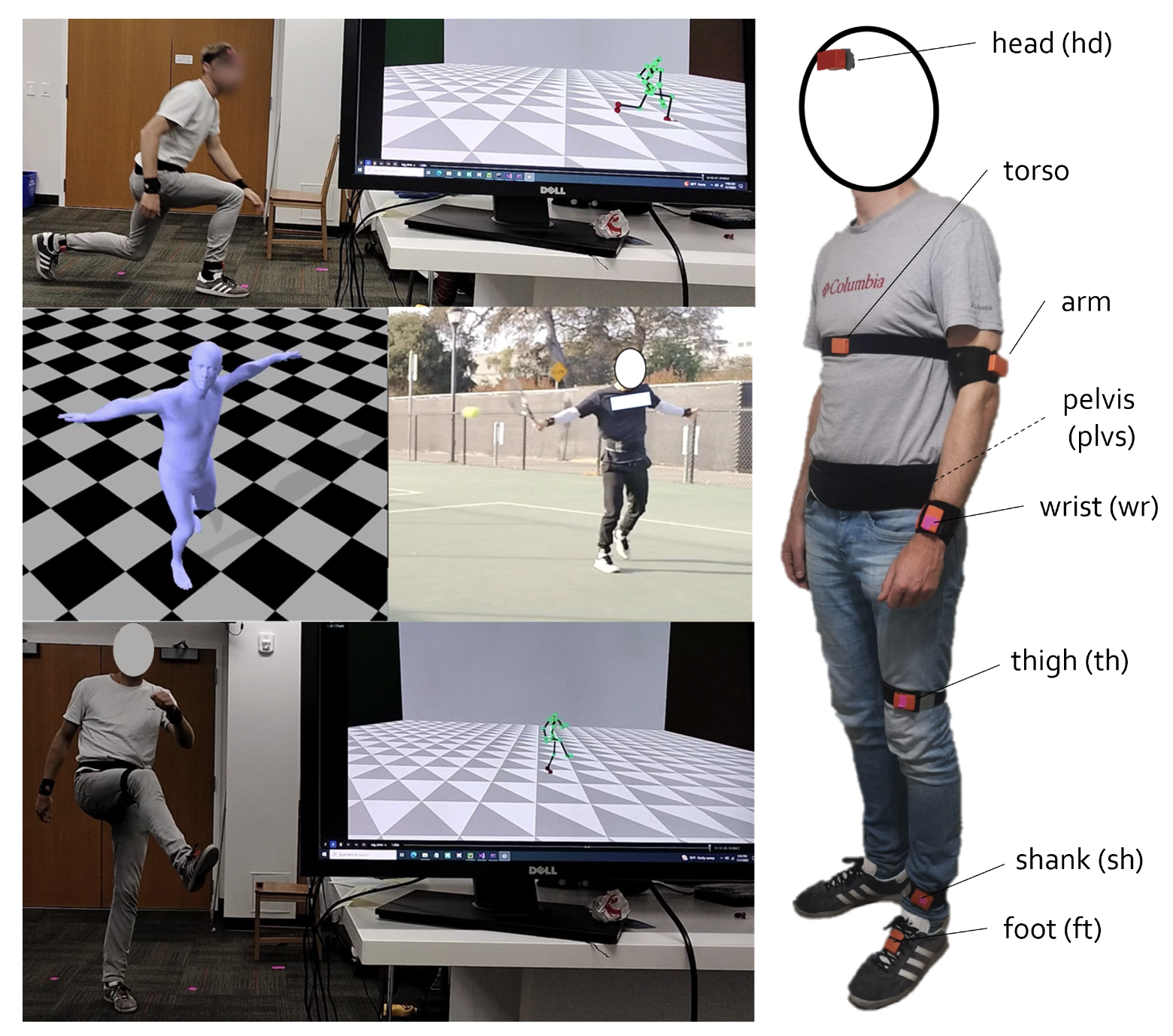Docket #: S23-273
DiffusionPoser: Human Motion Reconstruction from Arbitrary Sparse Body Sensor Configurations
Stanford researchers have created a single diffusion generative model, DiffusionPoser, that can reconstruct detailed human motion in real-time from sparse and arbitrary body sensor configurations, with broad application in a variety of motion capture end uses.
Human motion tracking from a minimal number of body-worn sensors ("inertial measurement units," or IMUs) has applications in sports science, medical wearables, and virtual and augmented reality. For practical applications, it is preferable to minimize the number of sensors worn by the subject. Therefore, the sensor configuration needs to be optimized to track the fewest possible body parts effectively for each application, requiring a computational model to be trained for each specific joint configuration.
This technology offers a single diffusion generative model called Diffusion Inertial Poser (DiffIP) that enables real-time, full-body motion reconstruction from a limited number of arbitrarily-located body-worn sensors. Since it is robust to a wide range of data inputs, it is suitable for a wide range of applications without the need to retrain the model for different use cases.
Figure:

Examples of live motion reconstruction using DiffusionPoser
Image credit:Inventors
Stage of Development
Prototype
Applications
- Virtual Reality/Augmented Reality
- Medical wearables devices
- Ergonomics design
- Sports science
Advantages
- Accurate reconstruction from a variety of IMU (sensor) configurations
- Applicability across a broad range of end uses without need for retraining
- Reconstructs in real-time as the activity is being measured
Publications
- Van Wouwe, T., Lee, S., Falisse, A., Delp, S., and Liu, K.C. (2024). DiffusionPoser: Real-time Human Motion Reconstruction From Arbitrary Sparse Sensors Using Autoregressive Diffusion. arXiv:2308.16682.
Related Links
Similar Technologies
-
Pipelined chip architecture for low-cost, energy efficient machine learning on edge devices S23-084Pipelined chip architecture for low-cost, energy efficient machine learning on edge devices
-
A New Accurate Method of 3D Full Body Motion Capture for Animation S05-433A New Accurate Method of 3D Full Body Motion Capture for Animation
-
Wearable Optical Sensor System for Musculoskeletal Movement S21-005Wearable Optical Sensor System for Musculoskeletal Movement